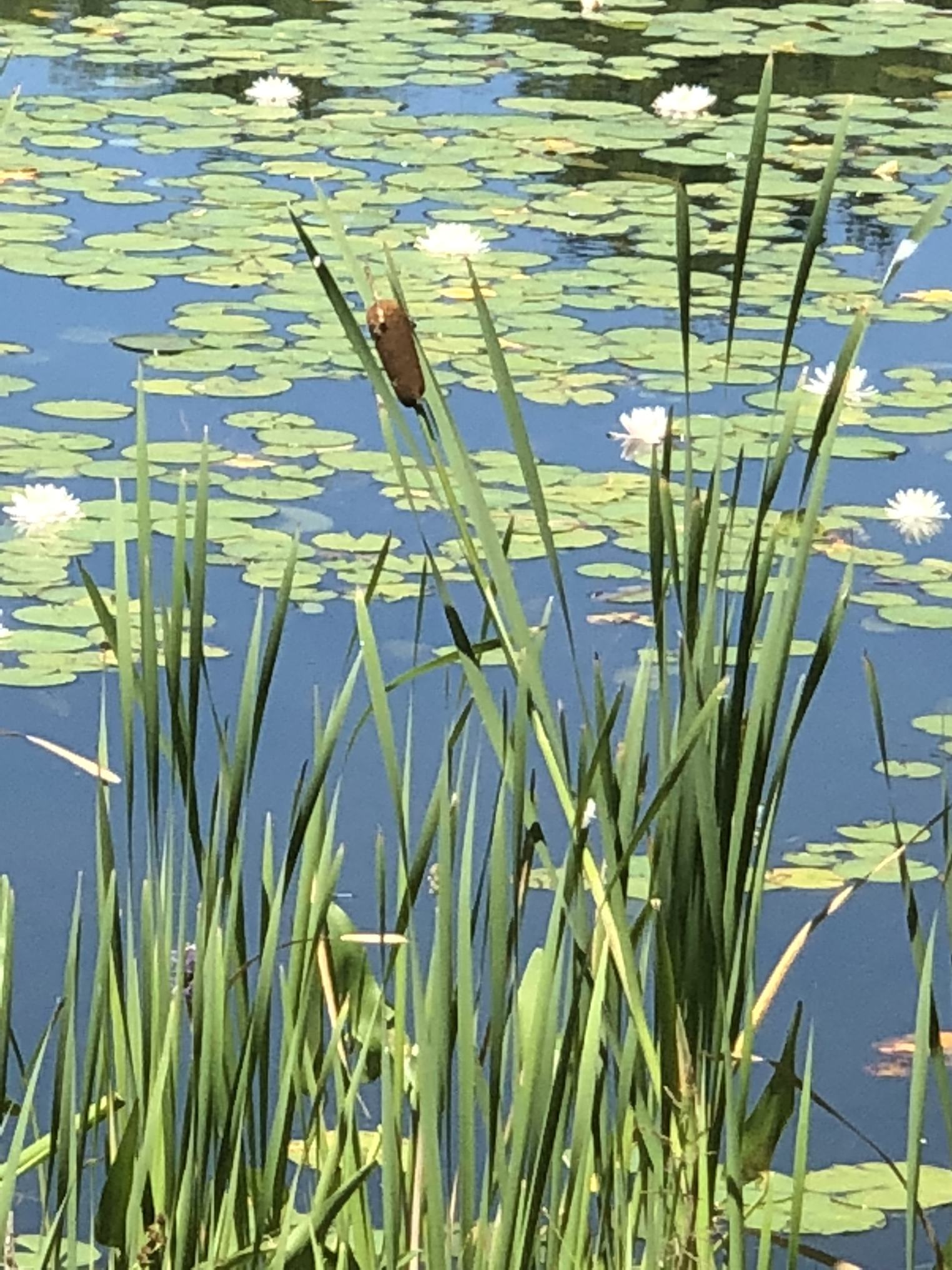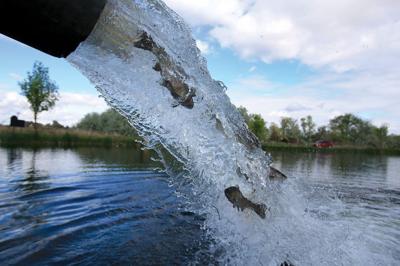Northern RI – Whether one goes fishing or enjoys the pastime of observing fish, fish seem to fascinate people. In 2020, there were some 42 million freshwater fishermen and women in the United States, an increase from 39.2 million in 2019.
The watery world of aquatic animals is abundant in northern Rhode Island.
Trout are a favorite prey. The RI Department of Environmental Management stocks trout; “designated trout waters,” are located in various areas of the state including in Burrillville at Branch River, Clear River, Lapham Pond, Peck Pond, Round Top Brook, Big Round Top Pond, Little Round Top Pond, and Wallum Lake. The fish are also stocked in Glocester at Brandy Brook and Spring Grove Pond, as well as in Burrillville /Glocester at the Chepachet River, and at Burrillville/ North Smithfield’s Tarkiln Pond.
Raising the fish takes two years. Eggs from fish hatcheries are put into incubators. They hatch in about two months. The young – fry – are then kept in tanks, “fed almost constantly,” for about 90 days until they grow to four inches long. Next, the fish are put into “outside raceways until they are fully grown, which is generally about the age of 26 months but can be as early as 18 months,” according to DEM.
Catch-and-release
In Rhode Island, “open season,” on trout, salmon, and charr starts at 6 a.m. on the second Saturday in April, and, “with the exception of designated catch-and-release areas, any legally caught trout, salmon, or charr taken from the fresh waters of Rhode Island shall be immediately released alive into the waters from which it was taken or shall be killed at once and become part of the daily bag limit,” by state regulations.
“Ask any fisherman, and he’ll tell you that there’s nothing quite like the tug of a fish on the end of the line. Once you land your catch, there’s a decision to make — keep it or release it,” and that is highly regulated, according to adventure.howstuffworks.com. What’s more, “fishing is a huge industry. The 44 million Americans who consider themselves recreational anglers spend a whopping $41 billion each year on the sport. When you consider the additional economic activity that fishing generates, like gas to and from the site or food for the trip, just to name a couple, you’re looking at roughly $116 billion in total revenue.”
More statistics: The non-profit Trout Unlimited has, “300,000 members and supporters dedicated to conserving, protecting and restoring North America’s coldwater fisheries and their watersheds.” Some of these hundred of thousand are catch-and-releasers. In 2018, a recreational harvest of 319,000,000 finfish were caught and released, “from Maine to Texas, Oregon to California, and Puerto Rico.” Moreover, fishing trips in 2019 added another 562,000,000 to the catch and release fish toll, according to the NOAA Fisheries Service Marine Recreational Database.
About fish, one fishing enthusiast wrote, “Can they learn to avoid a lure? In my grandfather’s day, every fish caught that was legal came home to a hot frying pan. Today’s angler has a different mentality and fish are released to be caught again. Catch and release, and selective harvest, are now the norm…”
A fish that lived again
Hundreds of years before 2022 and thousands of miles away in Italy comes perhaps the most astonishing “catch and release” type fish tale, a story from Europe of Saint Francis of Paola, born in 1416. Francis, believed to be a healer and miracle-worker who walked with kings, died in 1507 on Good Friday – a holy day of total fasting, or of eating fish – and had a pet trout named Antonella.
According to the story, after Antonella was killed, cooked and chopped up, Francis miraculously put the fish back together – and brought her back to life. Reported eyewitnesses say the fish swam quite happily upon release.
Fish Fight
About half or so of the population who fish, whether they throw the animals back into the water or not, believe fish are aware, while other folks deem fish as instinct-driven, non-thinking, non-emoting and non-pain-feeling. One potent critic of fishing contended the aquatic animals have, “a terrifying experience.”
Steve Cope, a former self-proclaimed, “true fish bum,” in an environmental magazine several years ago revealed his life had once revolved around the sport.
“Many fisherman,” Cope said, “namely the catch and release crowd, like to preach ethics on how to properly and respectfully handle a fish once it has been landed. This, of course, comes after they have hooked it and fought it — ‘played it,’ in angler-speak — to exhaustion, in what has to be a terrifying experience for the fish. The hypocrisy is stunning.”
Cope also stated the Pennsylvania Fish and Boat Commission, “raises and stocks tens of thousands of trout on an annual basis, dumping these hatchery-raised trout into streams where they cause ecological damage.” He compared that with, “if someone dumped a few thousand white-tailed deer off at a state forest”, which, he explained, “would throw an established ecosystem into chaos.” Further, he wrote, “Stocked trout compete with native trout and other fish species for food, shelter, and spawning habitat. In some cases, stocked trout will reproduce, creating a perpetual population of invasive species and possibly corrupting the gene pools of native strains of trout.”

Responses to Cope’s writing were strong. “Zack” commented, “What garbage. Yeah we tried that whole keeping everything you caught. It led to fished out trout streams and record low fish numbers. Catch and release is good for the sport. It is good for the environment and it is good for the state coffers. Half the fishermen I know don’t eat fish. To take away catch and release takes away the sport that they love. Your self righteous drivel sickens me. It’s people like you that will be the end to our wild places.”
The chapter president of the Trout Unlimited Southwest Vermont, Erin Lyons, meanwhile, responded to Cope’s article with, “A big part of my love of fishing comes from wanting to interact with these marvelous creatures. But this interaction is straight up harmful and violent and completely one-sided. Fish do not benefit in any way from fishing. I wish I could find a way to interact that does no harm, like birding. I like your suggestion of walking the streams in fall during spawning. I suppose watching the rises on a hot summer evening is another one. Or volunteering at a fish count. I don’t know what I’m going to do with my own moral dilemma here. But now I feel validated at least and not alone. Thank you.”
Fish Intellect
Obsolete is, “the image of fish as drudging and dim witted pea-brains, driven largely by ‘instinct.’” The new image of fish is they’re, “steeped in social intelligence, pursuing Machiavellian strategies of manipulation, punishment and reconciliation, exhibiting stable cultural traditions, and cooperating to inspect predators and catch food,” contended researchers in Fish and Fisheries, a science journal.
One fishing person opined, “In many ways we do like to think of our quarry as a wily, clever and discerning opponent—it strokes our egos to do so. But in the cold light of day we often baulk at the idea that this opponent—cold-blooded, scaly, bereft of any expression or language—can be educated. Yet in recent years the intelligence of fish, formerly considered the most cerebrally challenged of the vertebrates, has been the subject of much research,” explained writer-biologist Simon Blanford. Fish, he explained, “are simply exhibiting good adaptive behavior,” and he provides plenty of examples of what others deem as intelligence, such as the fact that bass can tell the difference between a hooked worm and one that isn’t. “And, like the bluegill that frustrated my daughters, they quite happily clear up all the free offerings while leaving those impaled.”

“Cod become much more wary and difficult to hook after being caught a couple of times,” he adds. “Carp…can be one time learners, avoiding hook baits and remembering to carry on doing so a year after their initial, and only, capture. “Pike very rapidly learned to avoid spinners”
“Rainbow trout fished for four hours a day showed high capture rates initially but these declined rapidly after five days of angling,” Blanford said. “A month after the initial fishing ceased the trout were still difficult to tempt and a further month later catch rates remained low.”
Information about fish is gleaned through observations from people who fish and by researchers in careful and non-interfering, non-invasive observation of the creatures in their natural environment. Inferences about what fish do and why are also reported from experiments conducted in the artificial conditions of laboratories; for example, show “that groups of zebrafish learn an avoidance response to an electric shock faster than single individuals.”
Trout and Bass
One of the researchers studying fish in their native habitat, Alexander Vail of the University of Cambridge, observed, “groupers and coral trout perform a pointing signal to indicate the location of hidden prey to cooperative hunting partners including moray eels, octopuses and Napoleon wrasses,” according to a report.
Another writer described trout fishing thus: “The goal of the fly fisherman is to catch trout through skillful deception. The adept fisherman studies trout behavior, weather, the water current, and the types of insects trout eat and when those insects hatch. He will often craft by hand the lures he uses. The trout can discern an artificial insect from a real insect; therefore, the artificial need to be “embedded with tiny hooks need to be a perfect deception because the trout will identify even the slightest flaw and reject the fly.”
Neither are bass intellectual slouches, it appears. As long ago as 1962, Sports Illustrated took on the topic of fish intelligence, specifically about bass, which they described as having a, “complex and highly organized social structure.”
“The bass, as an individual in his own particular environment, faces problems not so very dissimilar to those that man must face in his. Whether he is toiling to prepare his nest for the lady of his choice, fighting to protect the progeny he has spawned or struggling to survive in the underwater jungle in which he lives, the actions of the largemouth are bold and determined,” noted the article. “When his nest is threatened, he will courageously attack an enemy many times his size. When aroused or angered, he will strike at almost anything.”
That’s information from Elgin Ciampi, who experimented with fish in aquariums. He claimed the fish he experimented on, “were exactly comparable from a fisherman’s point of view to ones which might be found in virgin, wilderness waters. They had never seen a plug or experienced the dangers of being hooked.” Yet, Elgin noted, “some species like the largemouth bass were immediately suspicious of artificial lures. Others, like the eastern brook trout, which some anglers considers superior to the bass as game-fish, were remarkably slow in discerning differences between real food and imitations.” In addition, “both [large and small mouth] bass had many behavior characteristics in common.”
“My guess,” Ciampi said,”is that they have a communications system, which actually enables them to warn each other of danger,” SI reported.
Researchers might have erroneously assumed such complex behavior was only possible for people, great apes, and ravens. Fish are known to demonstrate altruistic behavior, such as helping injured or deformed fish to feed, or allowing them to feed first, and fish are said to use tools, suffer depression, form friendships, and make enemies.
It’s claimed that’s all anthropomorphic, that fish are neither smart or feeling emotion, or for that matter, pain.
“Anthropomorphism was considered as a hindrance to understanding the underlying causes of behavioral responses of animals to sensory stimuli,” is the opinion of at least one researcher. “
More on the pain debate is at https://issues.org/the-great-fish-pain-debate.
A video that went viral a while back shows two goldfish in a small aquarium. At dinner time one fish is apparently assisting the other – his disabled fellow fish – by gently pushing the fellow towards the surface to reach the food. Some folks commented the video made them cry or give up sushi, while others stated the behavior was just random.
“As a biologist who specializes in animal behavior and emotions, I’ve spent the past four years exploring the science on the inner lives of fishes,” wrote Jonathan Balcombe, director of animal sentience with the Humane Society Institute for Science and Policy, in an opinion piece for The New York Times. “What I’ve uncovered indicates that we grossly underestimate these fabulously diverse marine vertebrates. The accumulating evidence leads to an inescapable conclusion: Fishes think and feel.”
Fish Tail
Whatever the perspective on the inhabitants of the watery world, Rhode Island is accommodating anyone who wants to catch and release, or catch fish to broil, bake, or fry. People who fish, and those who prefer to observe fish, can participate in a DEM program.
“Volunteers are needed to help count fish as they move upstream during their annual spring migration. Counts only take 10 minutes and can be done at select DEM fish ladders around the state anytime from April 1st to the end of May,” notes RI DEM. For more information or to sign up, visit: https://forms.office.com/g/5XAXf0tazA
One more thing from DEM about fishing: “There is a limited amount of locations with port-a-johns. Please plan ahead: stay close to home and keep your fishing trip short.”









Seems like woke politics is hitting the trout fishing world of RI.